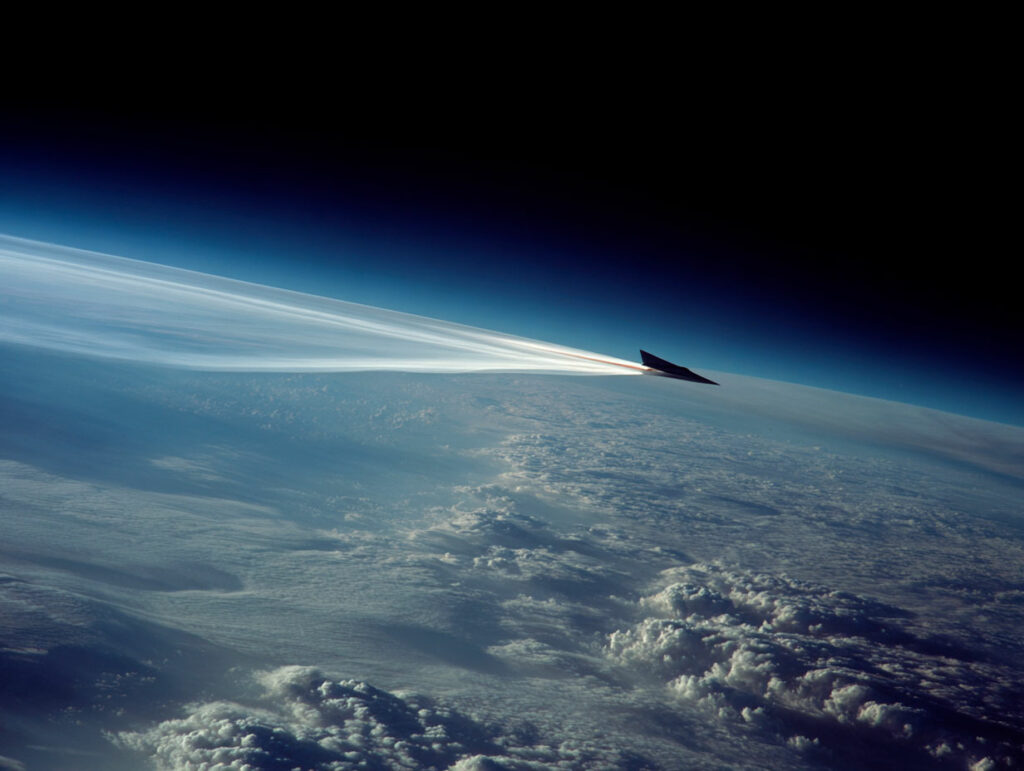
Lockheed Martin is developing the Mk21A reentry vehicle for the Sentinel missile, combining inertial and celestial guidance, a new thermal shell, and advanced safety subsystems.
Summary
The Mk21A program marks a major evolution in US nuclear deterrence. Lockheed Martin has received more than $1.4 billion to develop a new-generation reentry vehicle for the future LGM-35A Sentinel ICBM, which is set to replace the Minuteman III. The Mk21A follows the logic of the historic Mk21, but with a completely modernized architecture: an improved aeroshell, a redesigned weapons and firing subsystem, an RF subsystem for communications and telemetry, and a spin subsystem to stabilize the warhead during the re-entry phase. The carrier missile retains inertial guidance supplemented by celestial guidance to maintain high accuracy over several thousand kilometers. Initial service entry is targeted between 2027 and 2032, in parallel with the deployment of the new W87-1 warhead. Behind these technical details lies a strategic challenge: to extend the credibility of the US nuclear triad until the middle of the 21st century, while improving safety, security, and resistance to enemy defenses.
The general framework of the Mk21A program
The Mk21A is defined as an “integrated reentry vehicle”: it is not just a shell, but a coherent assembly that integrates the structure, sensors, firing logic, and interface with the W87-1 warhead. It will be mounted on top of the new LGM-35A Sentinel ICBM, which is intended to replace all Minuteman III missiles from the late 2020s onwards.
An initial contract worth nearly $1 billion was awarded to Lockheed Martin in October 2023 for the engineering, manufacturing, and development (EMD) of the Mk21A, with an overall deadline running until 2039 for the entire cycle. Subsequent modifications, including one worth more than $450 million announced in November 2025, bring the cumulative value of the program to approximately $1.48 billion for the current phase alone.
In terms of timing, program management documents anticipate initial capabilities being deployed on Sentinel between 2027 and 2032. This window corresponds to the gradual ramp-up of the missile and the new W87-1 warhead, with initial production targeted for around 2030.
The concept of a nuclear reentry vehicle
A key element in the ballistic chain
In an intercontinental ballistic missile, the sequence is divided into three phases: propulsion, exo-atmospheric ballistic flight, and atmospheric reentry. The reentry vehicle is the part that survives this last phase, at speeds that can exceed Mach 20, under extreme thermal flows and high mechanical stresses.
It must protect the warhead from temperatures of several thousand degrees on the surface, while maintaining a precise trajectory up to the weapon’s launch altitude. In the case of the Mk21A, this means delivering the W87-1 warhead with sufficient metric or decametric precision to maintain the military credibility of the ICBM.
The legacy of the Mk21 and the need for modernization
The Mk21A is based on the Mk21 used on the LGM-118A Peacekeeper missile, which carried up to ten W87 warheads in MIRV configuration. After the Peacekeeper was retired, some of these warheads were transferred to the Minuteman III, but in an aging architecture.
Modernization is not only a matter of extending service life. It also aims to:
- integrate new electronics that are more resistant to radiation;
- improving safety margins (safer firing systems, better protection against accidents);
- compatibility with the new Sentinel missile, whose mechanical configuration and flight profiles differ from those of the Minuteman III.
Inertial and celestial guidance: precision over very long distances
The Sentinel missile itself is a three-stage solid-propellant vehicle equipped with inertial guidance supplemented by celestial guidance. The former relies on an inertial navigation system (gyroscopes, accelerometers) that continuously measures the missile’s acceleration and recalculates its position and velocity. The latter uses a star sensor capable of comparing the apparent position of stars to an onboard catalog to correct for navigation errors.
This inertial/celestial combination is a classic feature of American ICBMs, but here it benefits from more accurate sensors and modern computers. It allows the missile to remain independent of any external signals (GPS, Galileo), which is crucial in an electronic warfare environment or in the event of the destruction of navigation constellations.
Once the post-boost bus has separated, most of the navigation is complete. The Mk21A follows a mainly ballistic trajectory, with possible minor attitude corrections via gas jets or aerodynamic control surfaces to optimize penetration and re-entry angle. The margins of accuracy therefore depend as much on the quality of the upstream guidance as on the stability of the vehicle during descent.
The aeroshell: a shield against reentry
The Mk21A’s aeroshell is the first barrier against the extreme environment of reentry. It must simultaneously manage:
- thermal flows, which cause heating and ablation of the surface;
- mechanical stresses, linked to overloads that can reach several tens of g;
- plasma effects, which can disrupt communications and sensors.
Technical documents mention a multi-section shell (high-speed nose, front section, body, rear cover), inspired by previous generations but optimized for the new flight profile. Improved composite and ablative materials distribute heat more evenly and reduce mass, while protecting the internal components.
The aeroshell also plays an aerodynamic role: its conical shape and mass distribution determine the vehicle’s stability at very high speeds. Small profile adjustments can improve resistance to interception attempts by anti-ballistic systems, making the trajectory more difficult to predict accurately.

The arming and firing subsystem
The arming and fuzing subsystem is one of the most sensitive components of the Mk21A. It must meet several conflicting requirements:
- ensure maximum safety during storage, transport, and maintenance;
- prevent any unauthorized detonation, even in the event of an accident;
- ensure reliable firing within a very narrow time window, after a trajectory of several thousand kilometers.
Public documents on the ICBM Fuze Mod program indicate that the new fuzes are designed for a service life of at least 30 years and must remain compatible with various reentry vehicles, including the Mk21A. These are multifunction fuzes capable of handling several modes: airburst at a specific altitude, contact or delayed detonation, depending on the nature of the target.
The modernization also enhances cybersecurity and resilience to electromagnetic pulses, a major challenge in the context of advanced electronic warfare.
The RF subsystem and spin management
The RF subsystem includes the antennas and radio frequency electronics used for telemetry, test communications and, potentially, altitude measurement functions (radar altimeter). Some of these capabilities are mainly used during the testing phase: they enable the performance of the Mk21A to be validated during test launches from launchers such as the Minotaur I, from Vandenberg Space Force Base. Flight tests were already conducted in June 2024 with an inert reentry vehicle, confirming the soundness of the technologies and designs.
The spin subsystem is responsible for imparting a controlled rotation to the reentry vehicle. This rotation has several functions:
- improving gyroscopic stability during descent;
- homogenizing the distribution of thermal flows on the aeroshell;
- reducing the impact of any mechanical or thermal asymmetries.
Typically, a spin motor or a system of side jets spins the vehicle at a few revolutions per second before dense reentry. Precise control of this spin is crucial to ensure terminal accuracy and the reliability of the sensors associated with firing.
A key milestone in US nuclear deterrence
Beyond the technical details, the Mk21A is part of a broader modernization of the US nuclear triad: new Sentinel missile, new W87-1 warhead, silo renovation, and command and control system upgrades. The cumulative costs of these programs amount to tens, if not hundreds, of billions of dollars over several decades.
For Washington, the challenge is not to increase raw power, but to ensure that each link in the chain—from the boosters to the Mk21A reentry vehicle—remains credible in the face of modern defenses, cyber threats, and technical risks associated with aging. The combination of inertial guidance and celestial guidance, the optimized aeroshell, the RF subsystem, and the spin subsystem creates an architecture designed to last at least until the 2050s.
In a context of strategic competition with China and Russia, the very existence of this type of program highlights a simple reality: as long as the major powers rely on deterrence, atmospheric reentry technology will remain one of the most sensitive, discreet, and strategic areas of military engineering.
Sources
– Military & Aerospace Electronics, “Lockheed Martin to build reentry vehicle for nuclear missile with inertial and celestial guidance,” November 17, 2025.
– U.S. Department of Defense, “Contracts for Oct. 30, 2023” and “Contracts for Nov. 13, 2025,” Mk21A contract sheets.
– Lockheed Martin, “ICBM Reentry Vehicles” and press release on the Mk21A flight test, June 18, 2024.
– U.S. Air Force Nuclear Weapons Center, “Test of Mk21A RV complete after launch aboard Minotaur rocket,” June 18, 2024.
– U.S. DoD, “Mk21A Reentry Vehicle Modernized Selected Acquisition Report,” December 31, 2023.
– Lawrence Livermore National Laboratory, “W87-1: The Modification that Invigorated an Enterprise,” 2022.
– DoD / NNSA, “ICBM Fuze Mod Selected Acquisition Report,” December 2022.
War Wings Daily is an independant magazine.